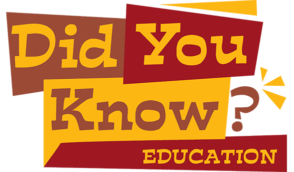Adapted from material written by Mike Spencer
The Queensland Kanaka Mission had received a request for help from a place where cannibalism was very much alive. Who would be willing to go and maybe risk their life to help tell cannibals about the love of God?

In 1904, a tall, slender, well-dressed woman stepped ashore on the island of Malaita in the Solomon Islands. She was the first European woman to visit the island, and she came in response to the plea from a local Christian pastor, Peter Ambuofa.
The woman’s name was Florence Young. She was born in Motueka, New Zealand in 1856. Her parents were strong believers in Jesus, and they raised their daughter to know faith in Jesus, too.
Florence had first become involved with Kanakas after she moved to Bundaberg, Queensland in 1882 to live on the family sugar plantation.
From back in 1868, the demand for cheap labour on the sugar plantations of northern Queensland had led to the arrival in Queensland of 62,000 Pacific Islanders, known as Kanakas (from the Hawaiian word for ‘man’). These Kanakas were recruited from Melanesian islands under a system that became known as blackbirding. Some Melanesians went to Queensland of their own free will, but many others were taken by force. They were often treated very badly, and some died.
Florence Young was a determined young woman who loved the Word of God. It is said that she would read through the entire Bible at least twice a year. Some people told her that the Kanakas were ‘animals’ and could not be taught anything. But her love for other people made her reject this attitude, and she decided to start schools for them.
At school, the Kanakas learned about the Bible. Florence was not an experienced teacher. She said, ‘I did not know how to teach, or where to begin. But I remember taking a chrysalis … to try and explain to them the fact of the resurrection and of a life beyond the grave … Inexperienced, keenly feeling my own impotence [powerlessness], and with no human helper, I was cast utterly upon God for guidance. And he taught the teacher and the scholars.’
Out of this first school for Kanakas grew the Queensland Kanaka Mission, which soon had many people telling others about Jesus in eleven different centres. Many thousands of people embraced the teachings of Jesus.
One of these people was Peter Ambuofa, who returned to the Solomon Islands in 1894 and established a Christian community at Malu’u. At first, his relatives did not accept him and his new faith; but it is reported that a series of miracles convinced them that Peter’s God was the true God, and they too became followers of Jesus.
Peter Ambuofa was not an educated man. He was confused about some aspects of Christian faith and how to teach others about it, so he asked the Queensland Kanaka Mission for some help. And that was why Florence Young led a group of missionaries to the Solomon Islands in 1904.
In the meantime, the newly created Australian federal government had decided that the Kanakas should all be sent back to their home islands by 1906 as part of the White Australia policy. The news that the Kanakas were being sent back to their homelands, and that some were being harmed because of their Christian faith, gave a new urgency to the mission. In 1904, at a Christian convention in Katoomba, New South Wales, the Solomon Islands Mission (later the South Sea Evangelical Mission) was formed.
From 1905 to 1906, many of the remaining Kanakas in Queensland came to believe in Jesus. Those who returned to the islands were bold in prayer and confident to tell others about their faith.
Because Florence Young treated the Queensland Kanakas with love and respect from her earliest interactions with them, many Christians in the Solomon Islands have lived their lives for God and told others about him to this day.
Source:
From Mike Spencer, One People, One Destiny: A Christian History of Australia, Southern Cross Educational Enterprises, 2014
